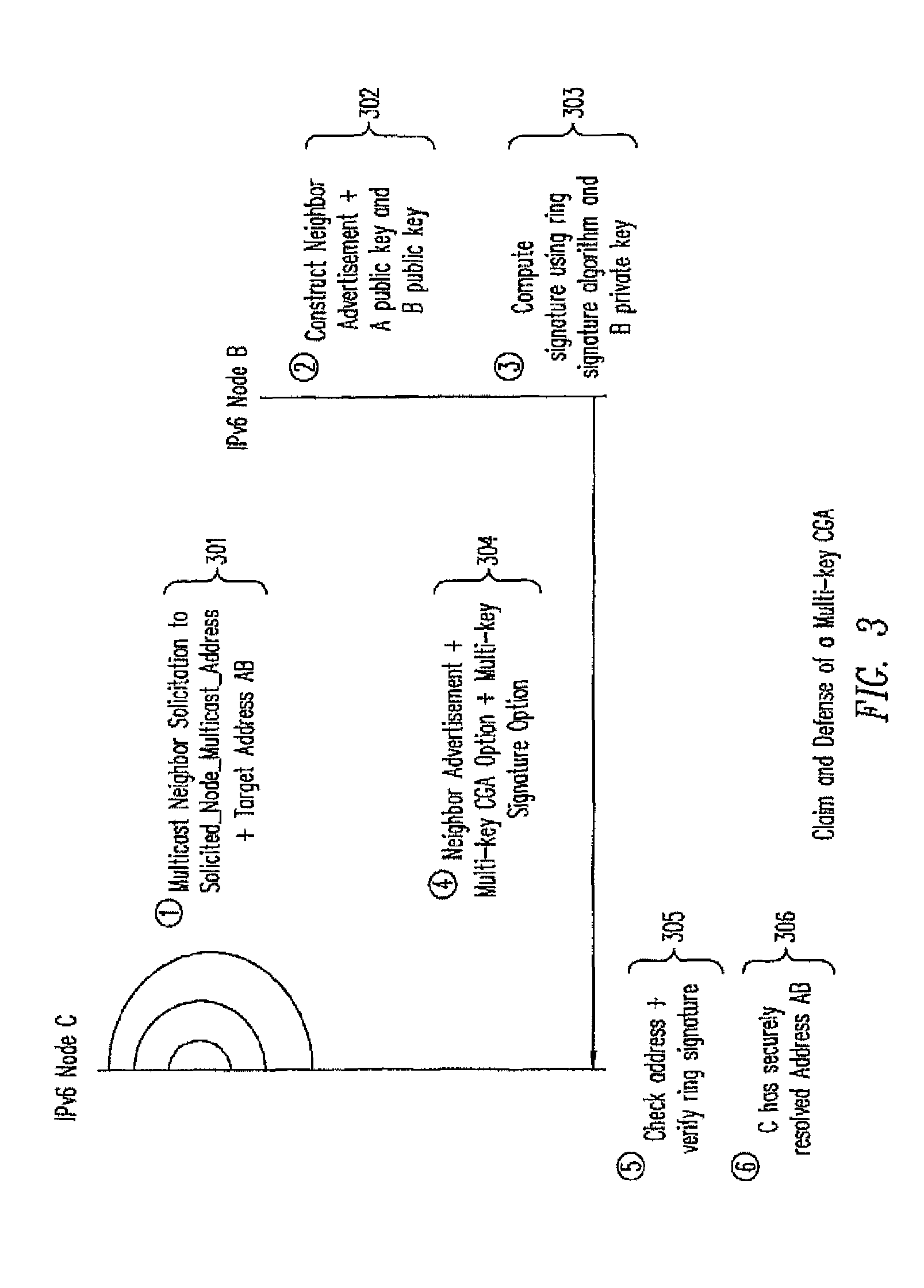Secure address proxying using multi-key cryptographically generated addresses
a cryptographic and address technology, applied in the field of secure claim and defense of network addresses, can solve the problems of inability to securely defend, inability to securely proxy the address using existing techniques, and inability to secure claim and defense using cryptographically generated addresses
- Summary
- Abstract
- Description
- Claims
- Application Information
AI Technical Summary
Benefits of technology
Problems solved by technology
Method used
Image
Examples
Embodiment Construction
[0029]The present invention allows Internet Protocol version 6 (IPv6) nodes that use mobile IPv6 for mobility management, or DHCP for address provisioning, to securely claim and defend their network addresses themselves or through proxies using the SEND protocol. For example, according to one embodiment, an IPv6 network node generates or obtains a multi-key cryptographically generated IPv6 address (MCGA) using any suitable method described in the Copending Application incorporated by reference above. The network node may also sign and verify a message for claiming and defending a network address under the SEND protocol. The network address to be claimed and defended may be either autoconfigured or obtained from a server using the DHCPv6 protocol. If the MCGA is generated by a Mobile IPv6 node as a Mobile IPv6 home address, the MCGA can be securely proxied by the Mobile IPv6 home agent after the mobile node has left the home link. However, if the MCGA is generated as a Mobile IPv6 ca...
PUM
 Login to View More
Login to View More Abstract
Description
Claims
Application Information
 Login to View More
Login to View More - R&D
- Intellectual Property
- Life Sciences
- Materials
- Tech Scout
- Unparalleled Data Quality
- Higher Quality Content
- 60% Fewer Hallucinations
Browse by: Latest US Patents, China's latest patents, Technical Efficacy Thesaurus, Application Domain, Technology Topic, Popular Technical Reports.
© 2025 PatSnap. All rights reserved.Legal|Privacy policy|Modern Slavery Act Transparency Statement|Sitemap|About US| Contact US: help@patsnap.com



